Over 100 years since Suffragette Emily Davison threw herself in front of the king’s horse at the Epsom Derby, we explore the stories behind some of the women involved in the Suffragette movement
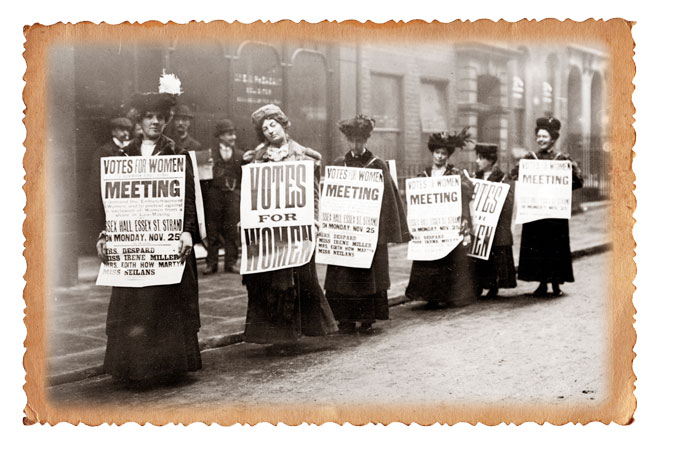
On 4 June 1913 Suffragette Emily Davison stepped in front of the king’s horse at the Epsom Derby and died four days later. Her death shocked a country that had been debating for over a century whether women should vote for Parliament. Mary Wollstonecraft may have written A Vindication of the Rights of Women as early as 1792, but the typical Victorian view was still that women were ‘The Angel in the House’, the title of a popular poem. So women fought to have a say in their children and property and to be able to go to university or enter a profession. But the symbol of their struggle was the right to vote. While the number of men who could vote increased throughout the 1800s, women were excluded. Their goal was universal suffrage – ‘Votes for All’.
The most tireless campaigner in the Suffragette movement was Millicent Garrett Fawcett. She and her sister Elizabeth were born and brought up in the Suffolk fishing town of Aldeburgh, the first town to elect a female mayor. This was Elizabeth, who as Elizabeth Garrett Anderson had become Britain’s first female doctor before retiring to her home town.
Her sister Millicent was based in Kensington, a fashionable area of London with attractive villas around the new museums. In 1865 she married the radical Liberal Member of Parliament Henry Fawcett and became part of the influential Kensington Society. They met at 44 Phillimore Gardens, one of several suffrage sites that can still be seen in the area. The society delivered the first petition for women’s suffrage – the vote – to Parliament and was the catalyst for many more societies, which later joined under Mrs Fawcett’s leadership as the National Union of Women’s Suffrage Societies (NUWSS) in 1897.
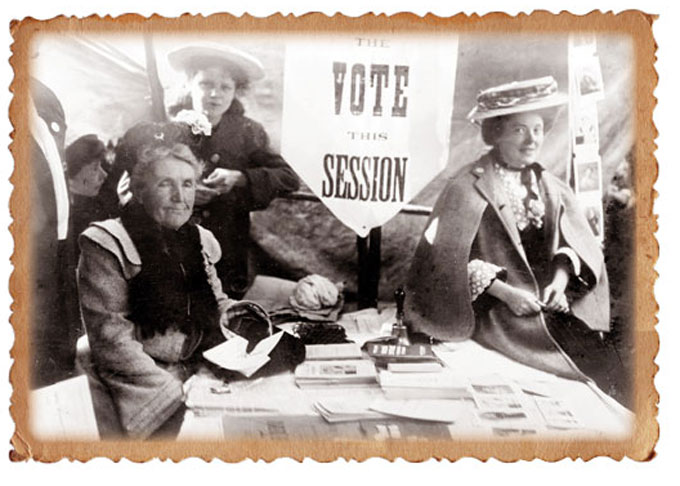
The National Union believed in the constitutional route to the vote and campaigned peacefully. Their work was well funded and they lobbied Parliament through petitions, public meetings, pamphlets and posters. They believed “women’s suffrage is for the common good of all” and Millicent Fawcett spread the message throughout the UK. Over 50,000 men and women belonged to the National Union in 449 branches throughout the country.
The greatest event of their campaign was the 1908 march through London. Over 10,000 women marched from the Embankment to the Albert Hall, carrying 700 banners. Women’s suffrage supporters had often been jeered by men, but this procession impressed and gained their respect. The Observer newspaper quoted a watching regimental major: “Fine lot o’sportswomen; I wish’em luck!” The report concluded with the words, “the Women made London their own”.
But many women wanted more than respect, they wanted progress – and that came from Manchester. Emmeline Goulden was born in Manchester’s Moss Side in 1858 and married barrister Richard Pankhurst. He was a strong supporter of women’s rights and Emmeline Pankhurst became active in the suffrage movement. On Richard’s death in 1898, she and her daughters became a leading force for votes for women.
In those key years they lived in Nelson Street in Manchester. Their home is now the Pankhurst Centre and this Victorian villa in the suburb of Chorlton on Medlock contains a small museum and centre for women. Frustrated by the lack of progress towards the vote, Emmeline Pankhurst founded the Women’s Social and Political Union (WSPU) in 1903. This was a militant organisation, and its motto was ‘Deeds not Words’. It was the WSPU who were dubbed ‘Suffragettes’, while the peaceful campaigners were known as ‘suffragists’.
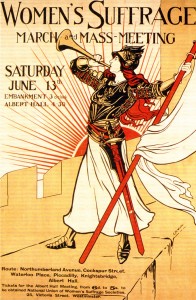
The Suffragettes first made an impact at a Liberal Party Rally at the Manchester Free Trade Hall. Built on the site of the infamous Peterloo Massacre, this magnificent building is now a five-star hotel, the Radisson Blu Edwardian. In 1905 Mrs Pankhurst’s daughter Christabel and ex-mill girl Annie Kenney heckled the speakers and were arrested. They refused to pay their fines and were sent to prison. This was the start of a very different type of campaign. Politicians could not ignore Suffragettes who smashed windows, set fire to letter boxes or chained themselves to the railings at Parliament. Some of their tactics were ingenious. They attempted to post themselves and disrupted the 1911 census. On the night of the census Emily Davison hid in a cupboard in the House of Commons, and the census had to record this as her address.
Emmeline Pankhurst was a charismatic leader and a fine speaker. She said to her troops: “The argument of the broken pane of glass is the most valuable argument in modern politics”. Many argued that this new militancy was turning people against votes for women. Arthur Conan Doyle, for instance, condemned it as “malicious monkey tricks”. But in the early years the Suffragettes drew attention back to the women’s cause. Millicent Fawcett herself said, “I hope the old-fashioned suffragists will stand by them. [The Suffragettes] have done more during the last 12 months than we have been able to accomplish in the last 12 years.”
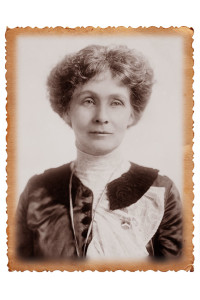
Unfortunately it seemed that the more militant the Suffragettes became, the more reluctant Parliament was to give women the vote. The Morning Post newspaper summed up this feeling in 1912. “Nothing could indicate more plainly their lack of fitness to be entrusted with the exercise of political power.”
The women’s prisons were now filling with suffragettes and Mrs Pankhurst and her daughters were among those who went on hunger strike for better conditions. The government did not want martyrs for the cause, so passed what became known, because of the way it toyed with prisoners, as the Cat and Mouse Act. Hunger strikers were force fed, then released before they became too ill. When their health had improved they were rearrested. The Suffragettes provided a number of houses for convalescence and comradeship. Mouse Castle in Kensington’s Campden Hill is now a listed building, while the Sussex farmhouse of Backseltown in Henfield was for ‘country mice’. At Eagle House near Bath recuperating Suffragettes were encouraged to plant a tree in the grounds. This became known as Annie’s Arboretum, after frequent visitor Annie Kenney. The most militant campaigners were imprisoned many times.
Emily Wilding Davison was one of these ‘guerrilla’ Suffragettes. She had funded herself through first-class honours degrees at Oxford and London universities and, after joining the WSPU in 1906, soon became a full time campaigner. It is still not known if she intended to become a martyr for her cause at the 1913 Derby. Many of her possessions are held by The Women’s Library in London, including the purse she carried on that day. Its poignant contents included a return rail ticket. Many believe she intended to pin a flag on one of the horses and it was just chance that it was the king’s horse who struck her. Her death shocked many, but she was also sent hate mail as she lay unconscious in hospital.
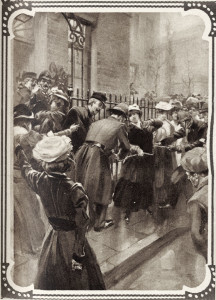
In less than a year, international events overtook the campaign. When war was declared against Germany in 1914 the government immediately negotiated with Mrs Pankhurst to support the war. Only six days after the outbreak it agreed to release all Suffragette prisoners and fund a patriotic rally with the slogan ‘Man must fight and women must work’. And women did work, from factories and farming to transport and offices. Women’s work in the First World War was one of the factors that changed the attitude of the government, but perhaps the vital one was the continuing industry of Millicent Fawcett.
The National Union had also stopped campaigning at the outbreak of war, but unlike the Pankhursts, did not actively recruit for the armed forces. Instead they formed political alliances and carefully negotiated with the government. In 1918, Mrs Fawcett accepted the compromise of the vote for women over 30 who were householders or married and then universal suffrage in the Equal Franchise Act of 1928. She died in 1929, soon after the building of Millicent Fawcett Hall in Marsham Street in Westminster, an educational and training centre for women. The hall is now part of Westminster School, but you can still see the foundation stone laid by the then Dame Millicent Fawcett.
After 1918 Emmeline Pankhurst changed the Women’s Social and Political Union into the broader Women’s Party, to promote women’s equality throughout life. She died in 1928 and is honoured by a statue in London’s Victoria Tower Gardens.
In 1999 an unusual ceremony took place in the Houses of Parliament. A commemorative plaque was secretly placed on the door of a broom cupboard. It was of course the cupboard in which Emily Davison defied the government at the 1911 census, and the plaque also recalls her death: ‘By such means was democracy won for the people of Britain’.
Related articles10 greatest women in British history |
Click here to subscribe!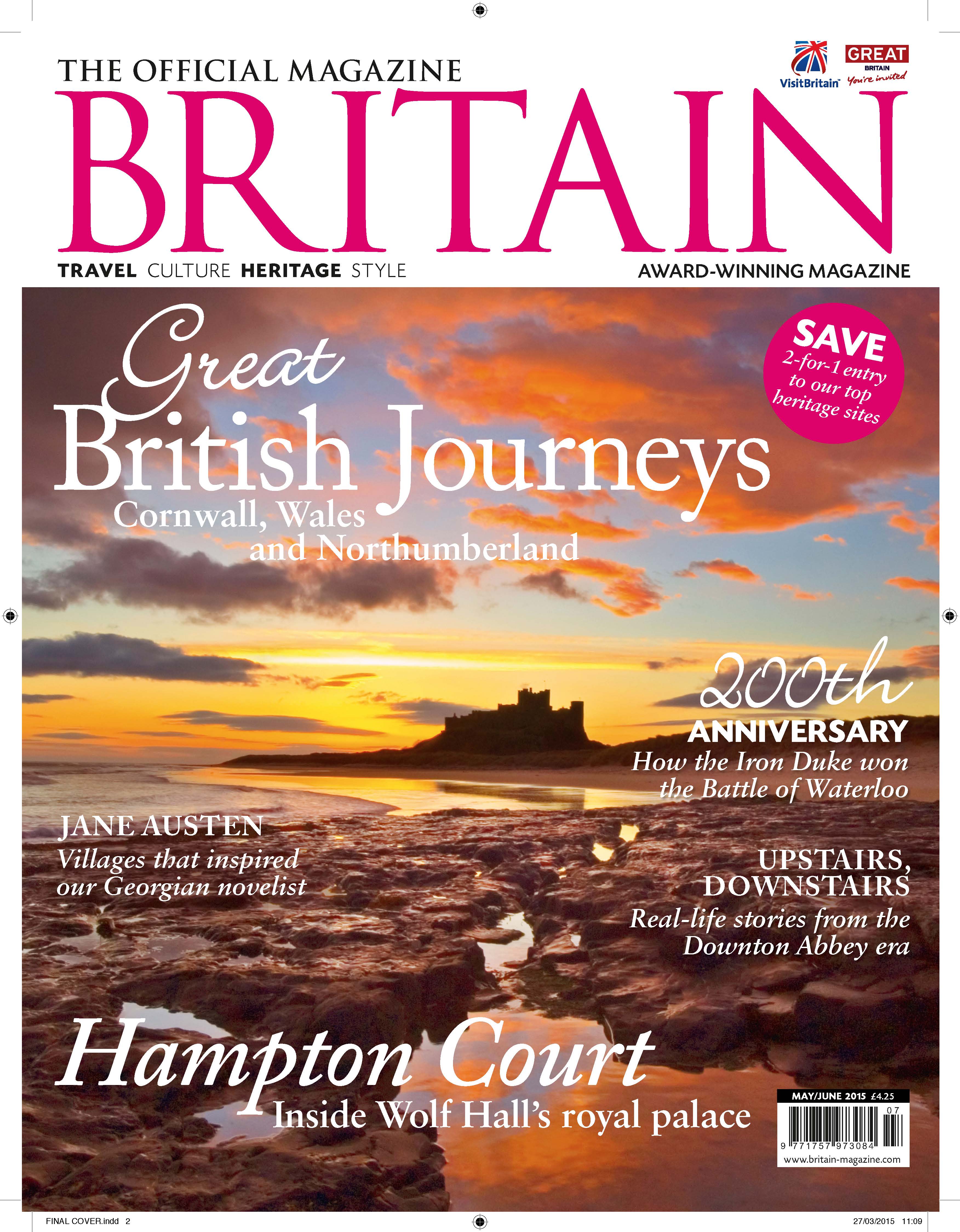 |
Download BRITAIN Magazine to your mobile today

 No mobile device? Purchase directly on Zinio for your desktop!
No mobile device? Purchase directly on Zinio for your desktop!

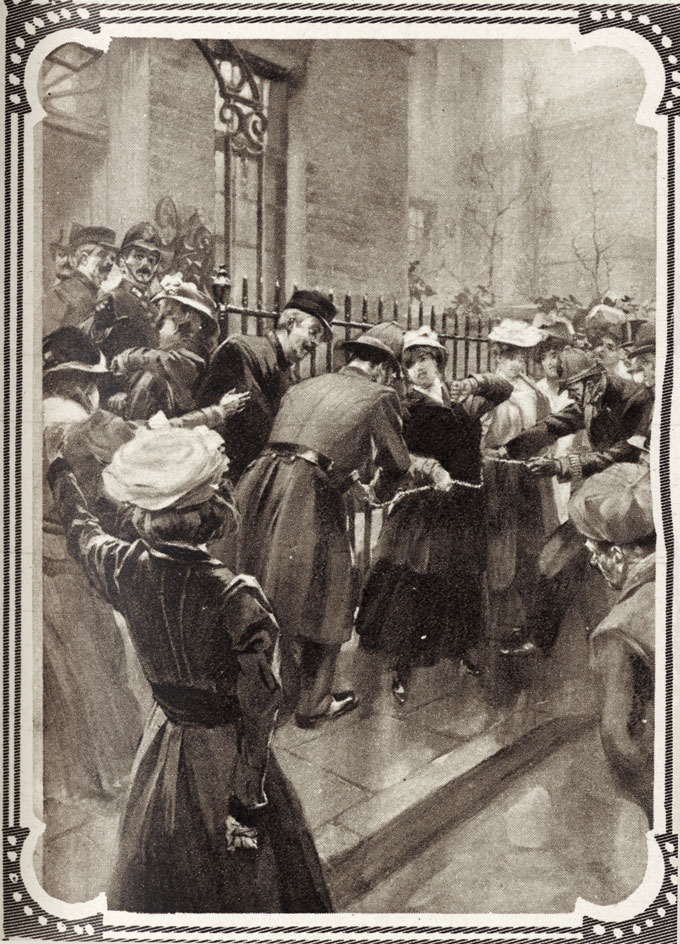




 © 2024
© 2024